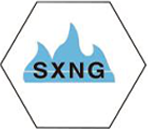
Dec . 10, 2024 05:51
Back to list
صمامات تخفيف الضغط
Understanding Pressure Relief Valves A Comprehensive Overview
Pressure relief valves (PRVs) are critical components used in various industries to ensure safety and efficiency in pressure systems. These valves are designed to release excess pressure from a system, preventing potential overpressure scenarios that could lead to catastrophic failures, equipment damage, or even serious injuries. In this article, we will explore the function, types, applications, and importance of pressure relief valves in industrial processes.
Function of Pressure Relief Valves
The primary function of a pressure relief valve is to monitor the pressure within a system and to open or close as necessary to maintain optimal pressure levels. When the pressure within a system exceeds a predetermined threshold, the PRV activates and releases pressure to bring the system back into safe operating limits. Once the pressure falls back to an acceptable level, the valve automatically closes, ensuring that normal operations resume without manual intervention.
Types of Pressure Relief Valves
There are several types of pressure relief valves, each designed for specific applications and operational needs. The most common types include
1. Spring-Loaded Valves These are the most widely used type of PRVs. They utilize a spring mechanism to keep the valve closed until a specific pressure threshold is reached. When the pressure exceeds this setting, the spring compresses, allowing the valve to open and release excess pressure.
.
3. Bursting Discs This type of pressure relief device consists of a thin disc that ruptures at a predetermined pressure level. While not a valve in the traditional sense, bursting discs are effective for one-time pressure relief situations, often used as a backup to traditional PRVs.
صمامات تخفيف الضغط

4. Safety Relief Valves These are designed to protect against overpressure scenarios in systems such as boilers and pressure vessels. They release pressure rapidly to prevent equipment failure and enhance safety.
Applications of Pressure Relief Valves
Pressure relief valves are employed across various industries, including oil and gas, chemical manufacturing, pharmaceuticals, and water treatment. Common applications include
- Boiler Systems To prevent steam boiler explosions by relieving excess steam pressure. - Gas and Oil Pipelines To ensure safe operations and prevent line ruptures. - Chemical Processing To manage reactions that may generate excess gases and pressures. - Hydraulic Systems To maintain pressure stability in hydraulic machinery.
Importance of Pressure Relief Valves
The importance of pressure relief valves cannot be overstated. They serve as the first line of defense against overpressure conditions, significantly reducing the risk of accidents and injuries. By allowing controlled venting of excess pressure, PRVs help to protect equipment longevity, reduce downtime, and prevent costly repairs.
Moreover, compliance with safety regulations often mandates the installation of PRVs in various systems. These regulations are designed to ensure safe operating conditions and to minimize hazards associated with high-pressure systems.
Conclusion
In summary, pressure relief valves are essential for the safety and efficiency of pressurized systems in numerous industries. Understanding their function, types, and applications helps organizations effectively manage pressure-related risks. Proper installation, maintenance, and testing of PRVs are vital for ensuring they perform as intended, safeguarding both personnel and equipment. As industries continue to advance and evolve, the role of pressure relief valves will remain crucial in maintaining safe operational environments.
Next:
Latest news
-
Safety Valve Spring-Loaded Design Overpressure ProtectionNewsJul.25,2025
-
Precision Voltage Regulator AC5 Accuracy Grade PerformanceNewsJul.25,2025
-
Natural Gas Pressure Regulating Skid Industrial Pipeline ApplicationsNewsJul.25,2025
-
Natural Gas Filter Stainless Steel Mesh Element DesignNewsJul.25,2025
-
Gas Pressure Regulator Valve Direct-Acting Spring-Loaded DesignNewsJul.25,2025
-
Decompression Equipment Multi-Stage Heat Exchange System DesignNewsJul.25,2025

